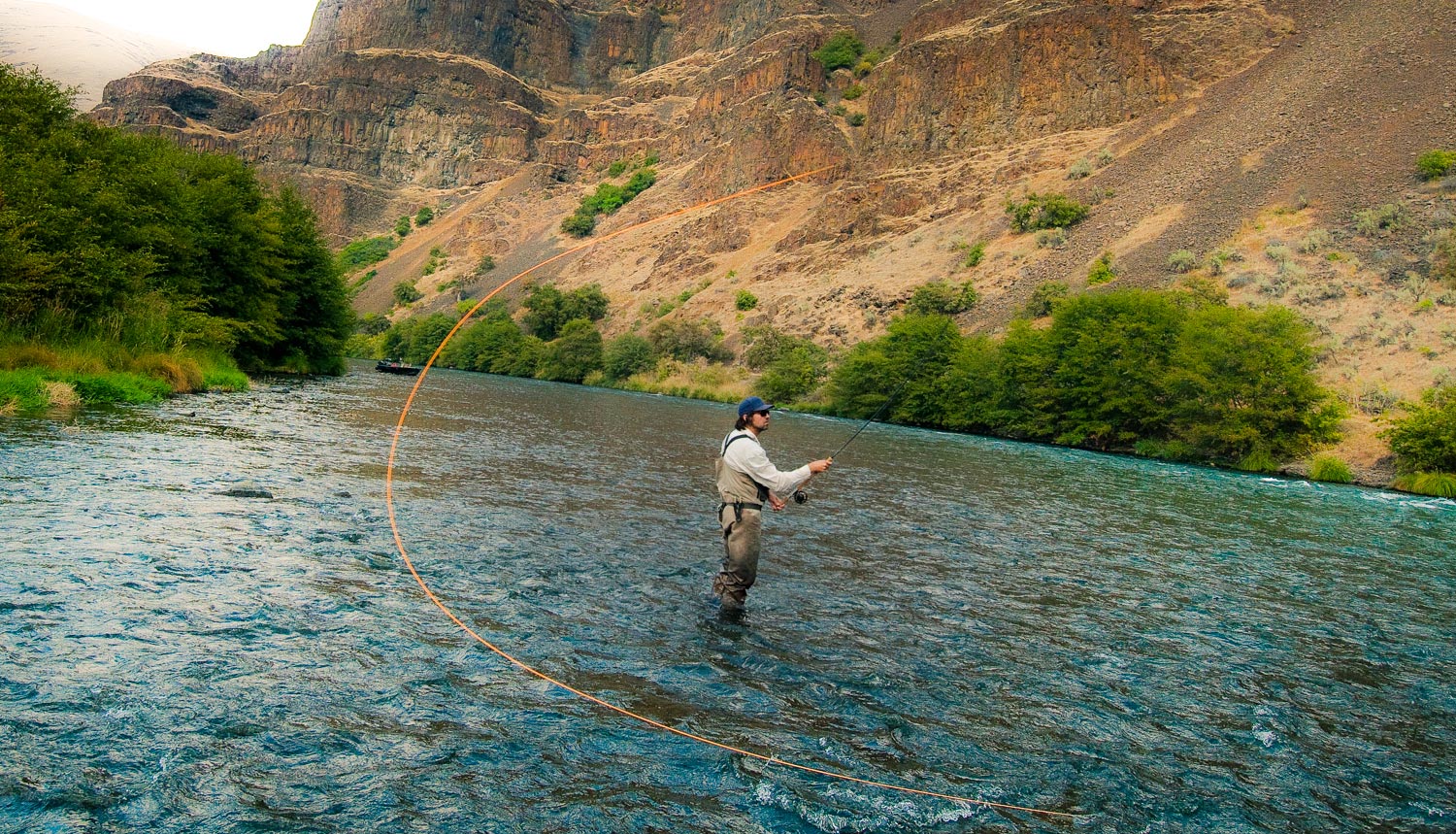By Jeff Hickman
Ask any Spey casting coach or steelhead guide what they find themselves saying most often during the day and most likely it’s the words, “slow down”.
I have often joked about just getting a tape recorder to say it for me on repeat. But oftentimes guys say they are trying really hard but they just can’t!
It’s as though their muscles won’t go slow, or maybe their brain won’t let their muscles go slow. Is it fear of failure? Paranoia that they might make a pathetic cast that just lands in an ugly pile of line? How embarrassing that would that be if others on the river saw! Rushed casts can happen for any number of reasons and they happen to everyone from time to time.
There are a couple of tricks I use when people get into this downward spiral of rushing the cast.
First I ask them to take a short one minute timeout and relax their shoulders. After the timeout, I ask them to stop and pause for a full second after setting the anchor. A good way to ensure that you wait a full second is to take a deep breath after you set the anchor. You don’t have to be in such a rush. After the anchor is set you have lots of time to sweep and then cast. It’s as if that pause just sets the tempo for the rest of the cast.
After all, the anchor placement is completely separate from the sweep and cast. It’s important to remind yourself of that. All too often, these three distinct moves start to blend into one and it just makes a rushed mess.
The other thing this pause achieves is that it allows your fly to sink slightly and stick to the water a touch. This helps to prevent your anchor from blowing, which is when your fly comes off of the water before your forward casting stroke.
After awhile, if this suggestion still doesn’t help, I will ask them to show me a cast that is too slow. “What does that look like?” I ask them. “Just one cast that is too slow.” When they try, the fear of making a wimpy cast doesn’t allow them to go slow enough.
I urge them, “You just showed me 10 casts in a row that were too fast. Let’s sacrifice one more and show me what too slow is. Then we can find the happy mid range”. Nine out of ten times when they really focus and try to go too slow they accidentally make a perfect effortless cast. It is always shocking to them!
Try this yourself. You might find out that you need to slow down.
Jeff Hickman Gink & Gasoline www.ginkandgasoline.com hookups@ginkandgasoline.com Sign Up For Our Weekly Newsletter!


this could be the magic bullet I’ve been hoping for. I have always believed the anchor was fragile and time sensitive. going out on my local river the minute air temp goes abive freezing.
You learn really quick to slow down when you stick a streamer in your head.
Great post – so true. I like the tape recorder thing.
Having the right setup ( line weight and length of head) has been my struggle. Once I got everything dialed in, good things started to happen for me.
Thanks!
Great advice. Really nothing to add!
I have found the pause after setting the anchor helps me. It improves the “stiction” of the fly line on the water which gives me more load on the sweep and it helps slow down the tempo of my cast.
Pingback: Weekly Review | michiganfly
Good advice, Jeff. For me, one more bit of helpful advice would be the WHY should I slow down with the sweep?. What am I trying to accomplish, or avoid, with a slower tempo?
I hate to hear the words slow down…..The better way to say this is, start more slowly. The slower you start the better things will turn out. Telling people to slow down can lead them to actually slow down during the cast and that’s a bad thing to do. However, if you work hard to start as slowly as you can, you will find it harder to over speed things.
Great tip! I’m brand new to spey/switch casting, and the biggest problem I seem to be having is managing my running line. It’s super slippery, and it likes to twist and tangle quite a bit. Even on the rare occasion that I get the cast just right and the line is ready to shoot out, too often my mismanagement of the running line keeps it from doing so… Doing a bit of research it seems that there are several different ways to handle this issue, but I’m wondering what your trick might be? Do you have a blog post or video with some instruction?